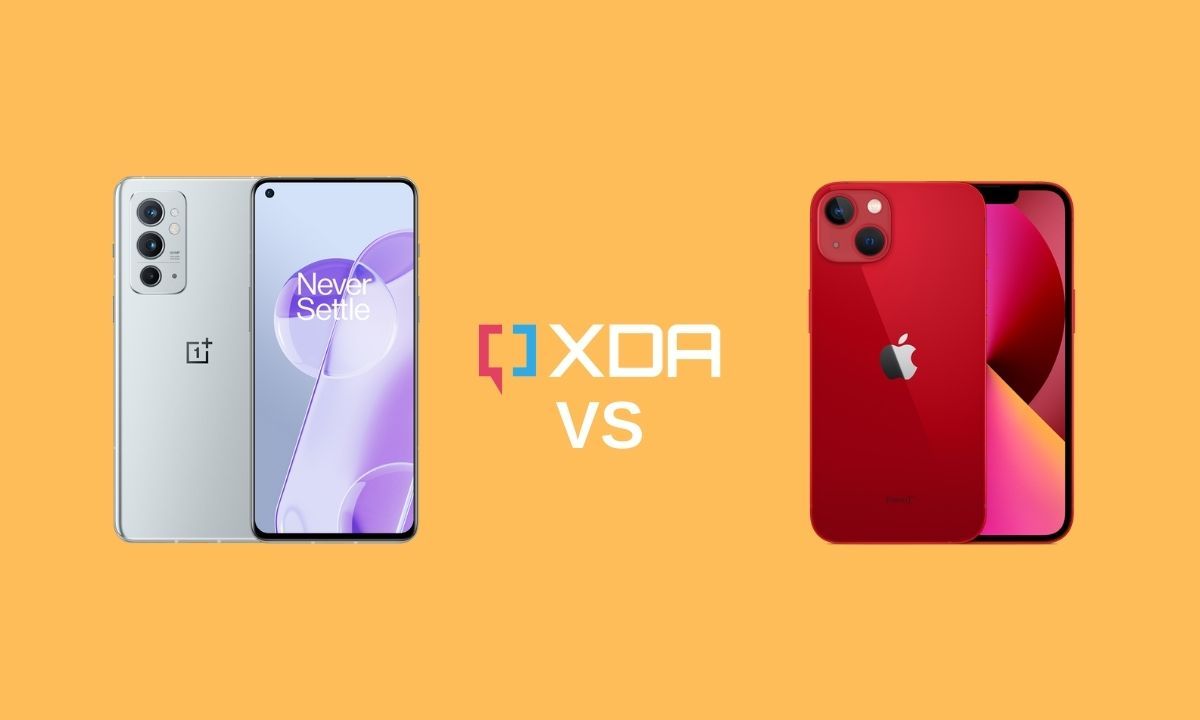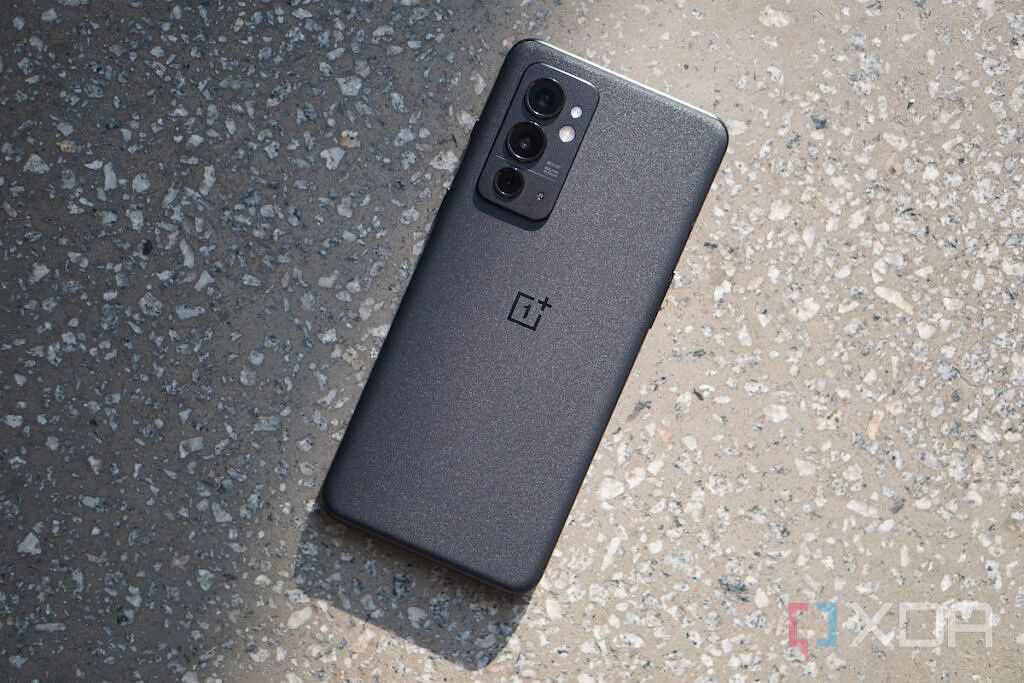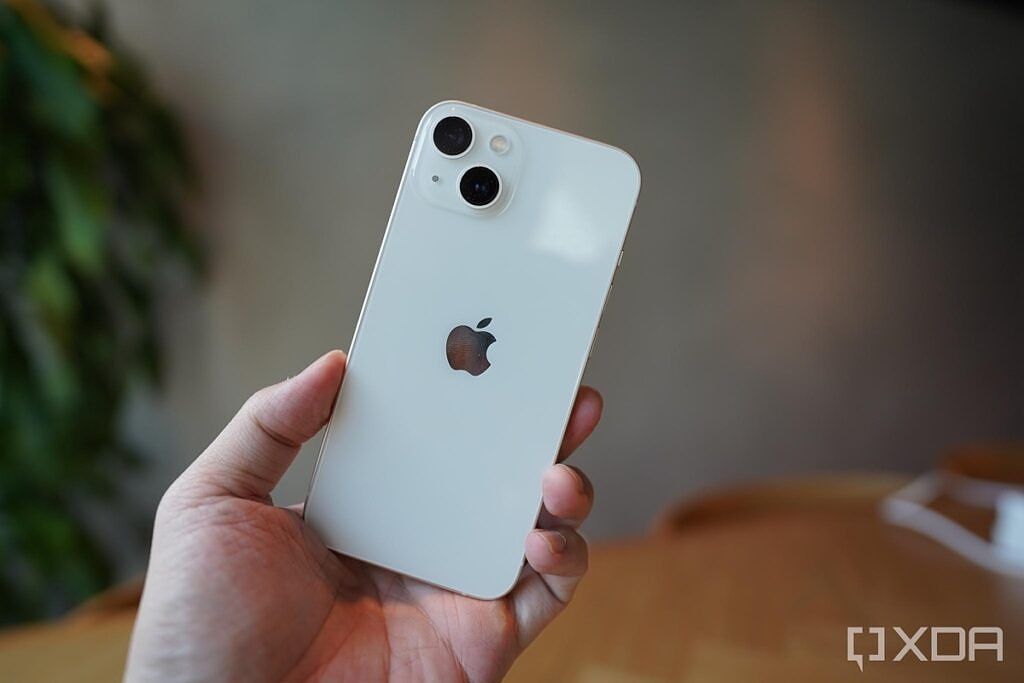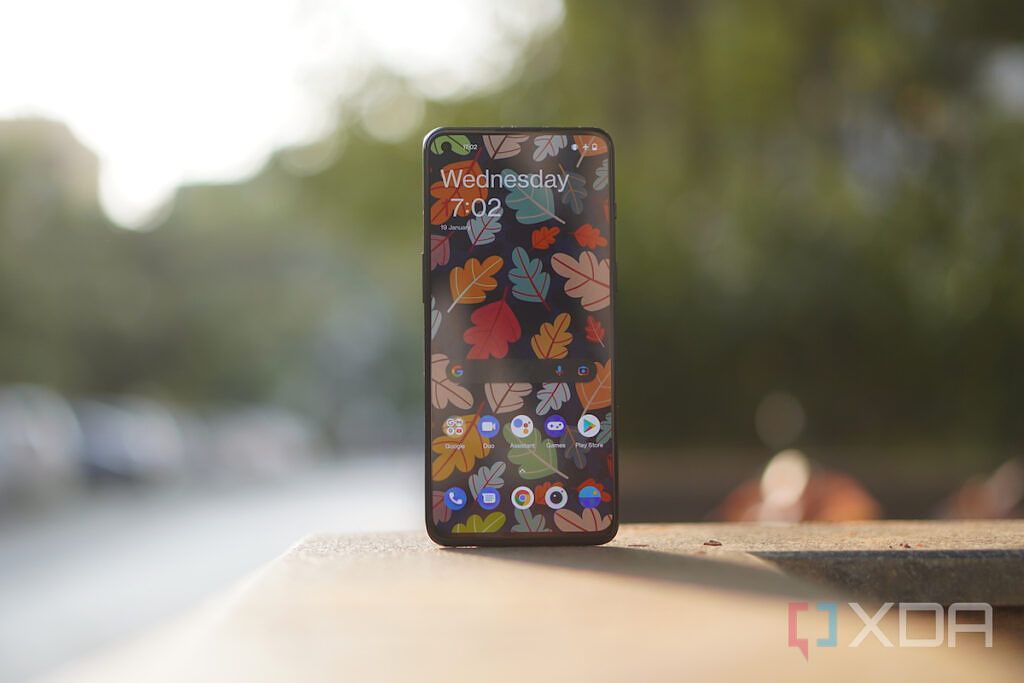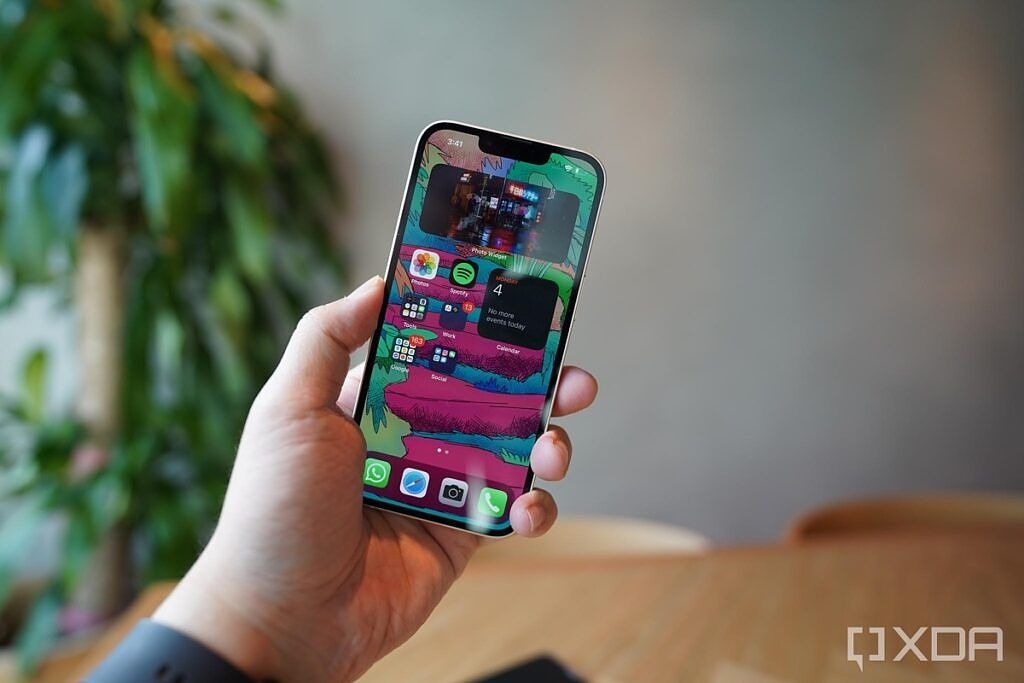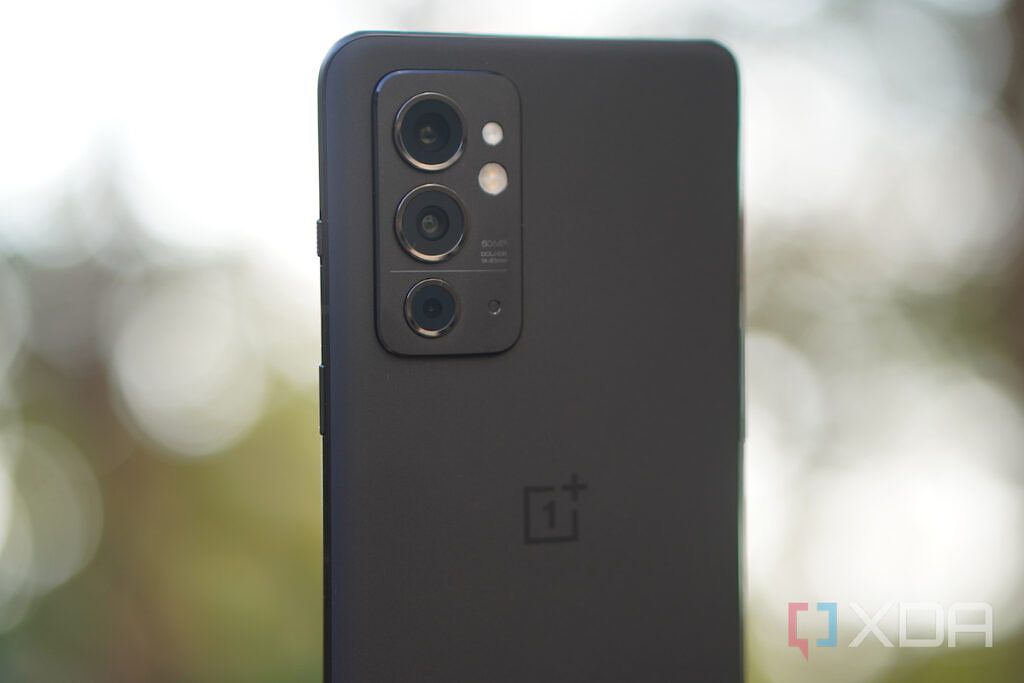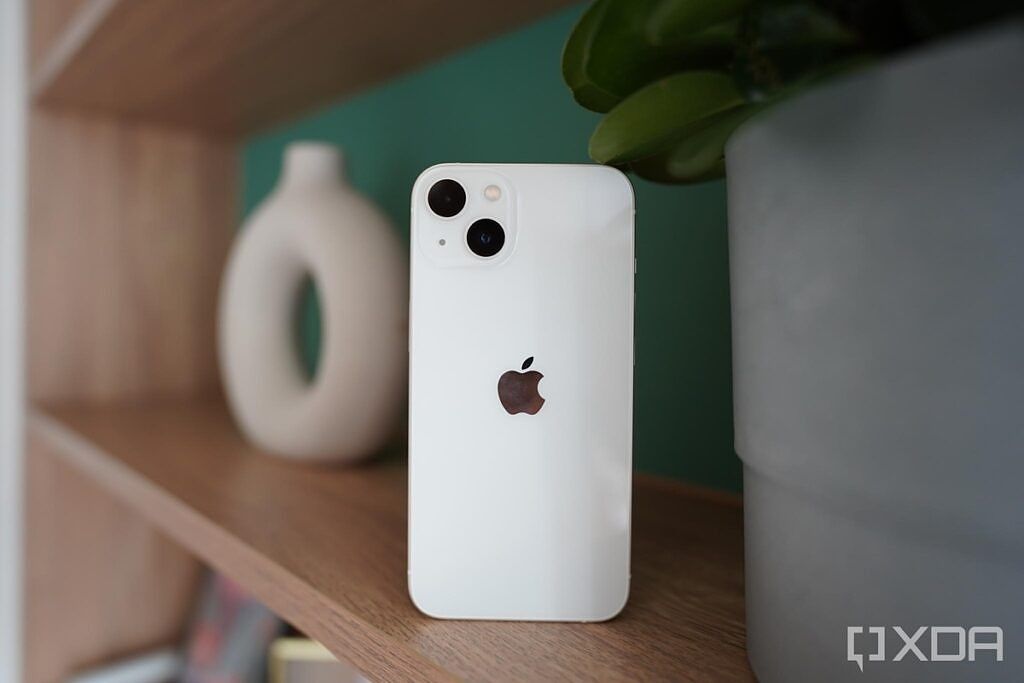The OnePlus 9RT is a great phone by itself, offering flagship-grade performance, a premium design, and a high refresh rate display among other things. It may not be the one to move the needle forward for the brand right now but there's no denying that it's one of the more tempting phones on the market for those who don't want to burn a huge hole in their pockets. You may often find yourself comparing the OnePlus 9RT with many other flagships from the likes of Samsung and Apple, wondering how OnePlus' value flagship fairs against the big players in the category. Sure, the latest flagships out there will handily trounce the OnePlus 9RT on the spec sheet, but just how good they are when it comes to real-world usage? Well, let's take a look at the OnePlus 9RT vs Apple iPhone 13 comparison to see how it plays out.
It goes without saying that the iPhone 13 is way more expensive than the OnePlus 9RT off the shelves. However, it can be had for a reasonable price when you account for numerous bank and exchange offers. Notably, you can also get a pre-owned iPhone 13 from reliable sources for a much more palatable price. Whatever the case may be, if you find yourself split between the iPhone 13 and the OnePlus 9RT then this comparison should help you make a better purchase decision.
Navigate this article:
OnePlus 9RT vs Apple iPhone 13: Specifications
Let's take a quick look at the specifications to find out what each of these phones brings to the table for the price:
|
Specification |
OnePlus 9RT |
Apple iPhone 13 |
|---|---|---|
|
Build |
|
|
|
Dimensions & Weight |
|
|
|
Display |
|
|
|
SoC |
|
|
|
RAM & Storage |
|
|
|
Battery & Charging |
|
|
|
Security |
In-display fingerprint scanner |
Face ID |
|
Rear Camera(s) |
|
|
|
Front Camera(s) |
16MP, f/2.4 |
12MP TrueDepth camera system |
|
Port(s) |
|
|
|
Audio |
|
|
|
Connectivity |
|
|
|
Software |
OxygenOS 11 based on Android 11 |
iOS 15 |
|
Other Features |
|
- |
Design and display
The OnePlus 9RT, as we mentioned in our review, gets a premium treatment in the design department. It's available to purchase in two colors, both of which look very attractive. You get glass on both the front as well as the back of the phone along with a metallic mid-frame. OnePlus also did a great job with the weight distribution on this phone, making it extremely comfortable to use with one hand. You also get OnePlus' signature alert slider on the right side of the phone along with a dual-SIM slot and a USB Type-C port at the bottom. Despite its relatively affordable price tag, the OnePlus 9RT feels like a premium high-end smartphone from the outside.
Apple's iPhone 13 looks like, well, any other base model iPhone from the last couple of years. It continues with the boxy, flat sides design language that Apple is now introducing across all of its devices. The iPhone 13 features a glossy back as opposed to the matte textured finish on the Hacker Black variant of the OnePlus 9RT. The flat railing or the mid-frame of the iPhone 13 is made out of aluminum and it makes up for a simple, yet elegant finish.
The iPhone 13 is both thinner and lighter than the OnePlus 9RT but it may not be the most comfortable to hold. That's because the iPhone 13 is wider than the OnePlus 9RT horizontally, and the flat sides also tend to dig into your palm. The OnePlus 9RT is much more comfortable to hold despite a slightly bigger footprint. It is, however, not as durable as the iPhone 13, though. You get Gorilla Glass 5 on both the front and the back but not an IP rating with the OnePlus 9RT, unlike the iPhone 13. Apple has used the Ceramic Shield protection for the iPhone 13's display and it also comes with an IP68 rating for dust and water resistance.
Moving over to the front of these phones, the OnePlus 9RT sports a 6.62-inch Full HD+ panel with a refresh rate of up to 120Hz. The best thing about this particular display is that it supports a touch sampling rate of up to 600Hz in supported titles. The touch sampling rate makes the OnePlus 9RT better for gamers, especially those who want to play competitive esports titles on their phones. Besides that, the quality of the Samsung E4 AMOLED panel on the OnePlus 9RT itself is also fantastic with great colors and good contrast levels.
The iPhone 13, in comparison, sports a relatively smaller 6.1-inch Super Retina XDR OLED panel. While it's an excellent display for day-to-day usage and media consumption, it tops out at a 60Hz refresh rate and 120Hz touch sampling rate. That's not necessarily bad by any stretch of the imagination, but there's no denying that the OnePlus 9RT's panel is superior when it comes to gaming. It also helps that the OnePlus 9RT sports a punch-hole cutout for the selfie camera as opposed to a notch on the iPhone 13.
Internal hardware
The OnePlus 9RT is powered by the Snapdragon 888, the SoC powering the OnePlus 9, and the OnePlus 9 Pro. It may not be the latest or the most powerful flagship chipset from Qualcomm right now, but the OnePlus 9RT delivers in spades. In fact, we found the OnePlus 9RT to be one of the best-performing Snapdragon 888 phones at that time, thanks to some quality of life improvements from OnePlus. The company is using a large vapor chamber to tame the thermal output for the Snapdragon 888, allowing it to deliver consistent performance. This also translates to reliable day-to-day performance outside of gaming and benchmarking applications.
It's a close matchup in the performance department because the iPhone 13 is powered by Apple's A15 Bionic silicon. It is, without a doubt, one of the most powerful mobile SoC out there right now. It handily beats the Snapdragon 888 inside the OnePlus 9RT in both benchmarking apps and real-world scenarios. The A15 Bionic is just head and shoulders above the Snapdragon 888 and even other chipsets that are powering many Android phones.
The A15 Bionic is also part of the reason why the iPhones can get away with relatively less memory and smaller battery units. The iPhone 13 runs on 4GB of RAM, which is now considered a below-average figure in the world of Android. The base variant of the OnePlus 9RT packs 8GB of RAM with an optional 12GB upgrade for more money. The base variant of both phones has 128GB of storage but the iPhone is slightly better in this regard as it can be purchased with up to 512GB of storage. The OnePlus 9RT tops out at 256GB, so keep that in mind.
As for biometrics, the OnePlus 9RT packs an in-display fingerprint scanner underneath its OLED display panel. We found this particular scanner to be both fast and accurate at authenticating, so no complaints here. The iPhone 13, on the other hand, relies on Apple's Face ID for authentication which we think is just as reliable as some good-quality fingerprint scanners. Both technologies are equally secure, although a recent iOS update that finally brought the ability for Face ID to work with masks made it so that your iPhone could be unlocked by a sibling or a lookalike. That being said, there's no clear winner here and it mostly comes down to personal preference.
But one area in which the iPhone 13 takes a clean sweep is battery life. Even though the iPhone 13 packs a relatively smaller 3,240 mAh battery, it'll last you longer than the OnePlus device in this comparison. The OnePlus 9RT was able to last for a day when we reviewed it, but we had to top it up on days with heavier usage. If you play a lot of games, for instance, you'll end up draining the battery faster. The iPhone 13, on the other hand, should be able to keep up till the end of the day without any issues. Your mileage is bound to vary based on the active usage and standby time, but we think there's simply no match for Apple's efficiency.
That being said, the OnePlus 9RT comes with a 65W charger inside the box that can top up the phone from 5% to 100% in around 30 minutes. So if your lifestyle generally means you are always near a charging point, then the battery life becomes a non-issue. The iPhone 13 charges much slower at 18-27W, meaning you'll find yourself hugging the charging point longer after every full discharge. The OnePlus 9RT lacks the support for wireless charging, though.
Cameras
The OnePlus 9RT uses the IMX 766 as its primary sensor along with a 16MP ultra-wide and a 2MP macro lens. The previous OnePlus phones that arrived before this weren't exactly known for being the most reliable shooters but the OnePlus 9RT changes that, at least with its main camera. The primary camera captures great photos overall with good colors and dynamic range. It also holds its own in low-light situations by capturing images with a good amount of detail with Night Mode enabled.
The ultra-wide camera, however, isn't as impressive as the main shooter as the shots lack details and also start to get noisy at night. There isn't much to talk about the 2MP macro camera either because we weren't able to capture any usage shots using it. We also noticed that the 16MP selfie camera struggled to capture detailed shots with accurate skin tones more often than we'd like.
The iPhone 13 only has two 12MP sensors at the back but it still mops the floor with the OnePlus 9RT in the camera department. The iPhone 13's rear cameras gain larger sensors compared to last year's iPhone 12. As a result, it pulls in more light to offer great shots at night, and it also brings a shallower depth-of-field. You can capture some stunning images with the iPhone 13's camera system. The Night mode will kick in almost immediately to work its magic in low-light situations too. We didn't get a chance to capture the same set of images from both phones for a side-by-side comparison, but we'll leave some camera samples below to give you an idea of the kind of photos you can expect to capture from each phone.
The iPhone 13 also gets "Cinematic mode", which is essentially portrait mode for video. This feature takes advantage of A15 Bionic's neural engine to process the scene and produce an artificial bokeh. You can learn more about it in our full review of the iPhone 13. This feature is not available on the OnePlus 9RT but it can record 4K videos at 30fps or 60fps, just like the iPhone 13.
OnePlus 9RT camera samples
Apple iPhone 13 camera samples
Software
The OnePlus 9RT runs OxygenOS 11 based on Android 11 out of the box and is yet to receive the final build of Android 12. Apple's iPhone 13, in case you don't know, runs on iOS 15 out of the box and will be first in line to receive the long-rumored iOS 16 update later this year. The whole argument about using Android versus Apple's iOS and its ecosystem product is quite an elaborate discussion and it's, quite frankly, beyond the scope of this article. That being said, the difference between the OnePlus 9RT and the iPhone 13 is entirely subjective when it comes to the software experience. As long as you know what you want from a phone's hardware and you're open to using both Android and iOS, then the software is unlikely to influence or change your purchase decision.
There's a lot to say about both operating systems and the fundamental differences that they bring to the table, but they're both great operating systems with some neat features. That being said, we won't be surprised if you picked iOS over Android in this case as OxygenOS seems to have lost its identity over the last few months. OnePlus ships some neat features with OxygenOS for the OnePlus 9RT but it's not nearly as polished as the iOS 15. Not only is Apple's software more consistent than OxygenOS, but it also offers more longevity.
OnePlus 9RT vs Apple iPhone 13: Which one should you buy?
Before we conclude, it's worth mentioning that the OnePlus 9RT is exclusive to the Indian and Chinese smartphone markets. So if you're shopping for a phone outside these regions, say, in the US, then you'll either have to buy the iPhone 13 or explore some other OnePlus devices. As we also mentioned earlier in this article, the OnePlus 9RT is significantly cheaper coming in at ₹42,999 which is roughly $555. The iPhone 13 starts at ₹79,990 for the base variant with 128GB of storage. So if you are looking for the best value for your money and don't want to spend upwards of ₹45,000 on a smartphone then stick with the OnePlus 9RT.
It's an excellent phone overall that offers reliable performance with great gaming capabilities, a beautiful AMOLED display with support for high refresh rate and touch sampling rate, a decently large battery with fast-charging capability, and more. It's just a no-brainer for someone who's looking to get the best bang for their buck on the performance front. You can also consider checking out the vanilla OnePlus 9 if you're not hellbent on buying either a OnePlus 9RT or an iPhone 13.
On the other hand, if you can get a unit of iPhone 13 for, say, less than or around ₹50,000 right now and if you don't mind using iOS, then we can't recommend Apple's current flagship enough. It still may not be as affordable as the OnePlus 9RT but you get a more consistent software experience, reliable performance, a better set of cameras, and longer (also more timely) updates. You will, however, miss out on the high-refresh display and fast-charging support, so keep that in mind.
Can you find an iPhone 13 at such a heavily discounted price? Probably not unless you get lucky with an unmissable deal or exchange your existing phone. Alternatively, you can also consider buying a pre-owned unit of iPhone 13, in which case it can be had for around the same price as the OnePlus 9RT. You'll find a lot of pre-owned and "renewed" iPhone 12 and iPhone 13 units for around ₹45,000 to ₹60,000 price range, but make sure you're picking a unit from a reliable source. You'll have to be wary of the phone's condition to make sure everything works as intended and nothing's broken.
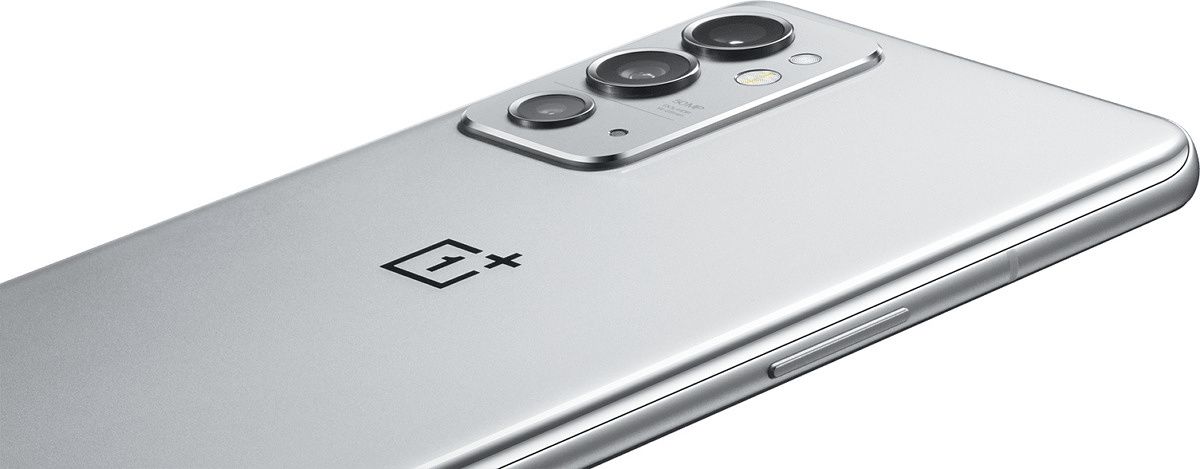
OnePlus 9RT
The OnePlus 9RT is powered by Qualcomm's Snapdragon 888 chip and runs Android 11 out of the box.
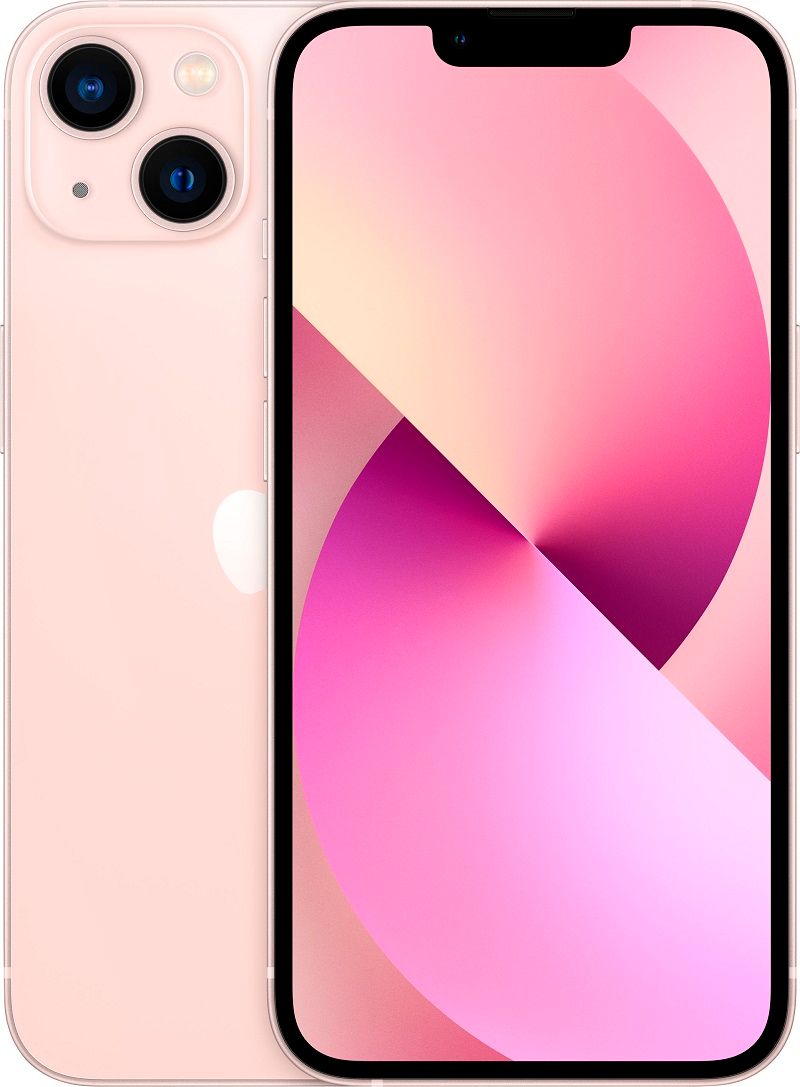
Apple iPhone 13
The iPhone 13 brings the powerful A15 Bionic and a really good main camera along with the usual Apple package of great software and eco-system.
We'd love to know your thoughts on this comparison. Would you be interested in buying a pre-owned or a refurbished flagship phone instead of a new unit of some other device that fits in your budget? Let us know by dropping a line in the comments below!

